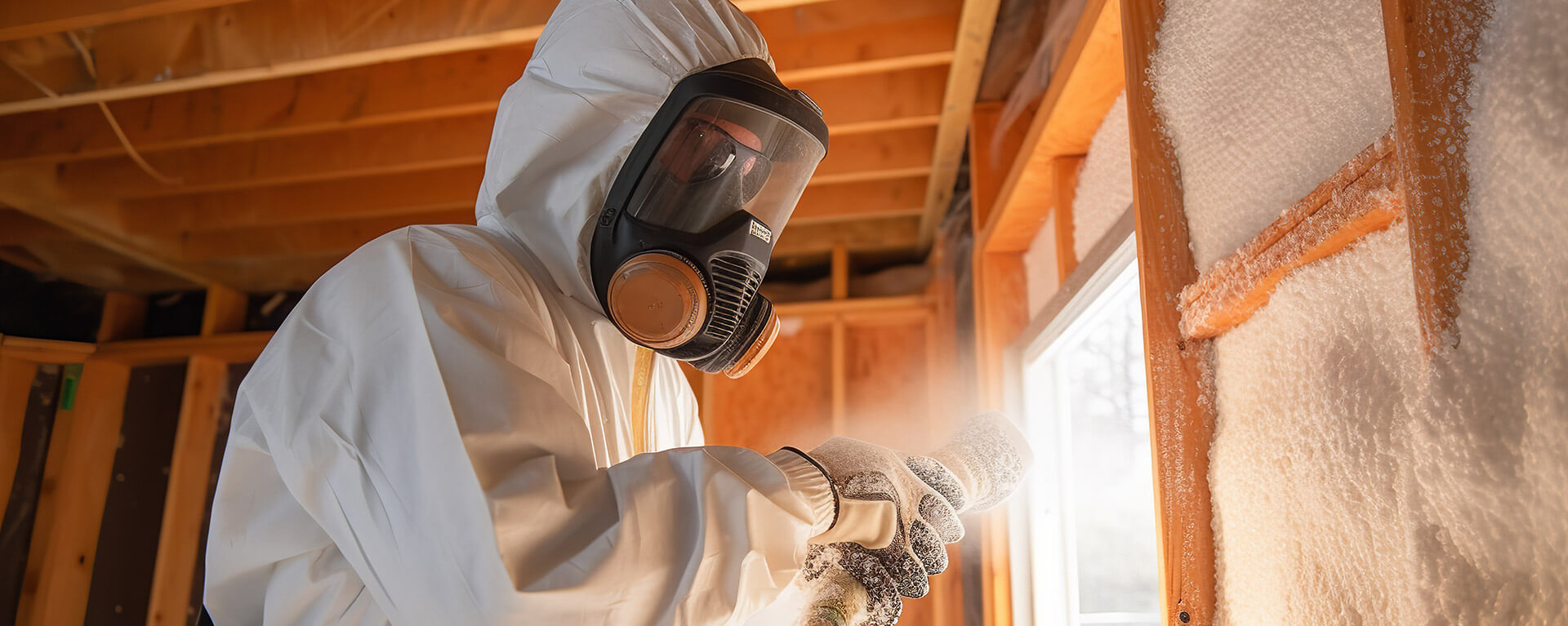
When it comes to protecting your home and family from the elements, we all know that having a good roof and walls are needed. But you want more than that. You also want insulation, which is necessary for temperature and moisture control, fire safety, plus it’s required to meet building codes.
Let’s explore why having insulation in your home makes such a positive difference and dive deeper into why it’s necessary.
Put simply, housing insulation is the layer that helps control temperatures throughout the home. If you have ever put your hand on a door or window pane when it’s below freezing outside and felt the cold, you may be able to imagine how your entire home would feel if all of the walls transferred heat the same. The wood of the door or glass of the window can keep the breeze and cold out compared to if they were open, but not as well as your walls do.
Remember what you learned in high school physics? Heat transference means that heat always flows toward colder spaces until the two spaces are the same temperature. If your walls transferred heat like your door or window, you would literally be heating not only the interior of your home, but the outdoors as well; the interior heat would be moving through the walls to the colder environment until both inside and outside are the same temperature.
No matter what type of insulation you need, the experts at City Wide Insulation are here to help.
Request a QuoteIt’s easy to understand how insulation keeps a house warm when it’s freezing cold outside but, conversely, it helps cool homes on hot days by keeping the outside air from warming up your interior spaces.
Insulation also plays a critical part in fire safety. Insulation materials are noncombustible as they include thermal resistance. In a life and death situation, a properly insulated home can slow the spread of a fire which could make all the difference in reaching safety.
While the main benefit of home insulation is climate control and fire safety, insulation also works as soundproofing. Solid objects like walls, doors and windows are good at transferring sound waves, but the irregular surfaces and air pockets of insulation helps break them up
So what happens if you don’t insulate your house? You end up with poorly controlled interior temperatures, high heating or cooling bills, and your home lacks proper moisture control which can cause serious damage in your attic and throughout your home. Plus you’re at greater risk in the event of a fire and you’ll hear more noise penetrating your walls.
Temperature control has been an aspect of home building for as long as homes have been built, so there are a wide range of insulation types depending on your location. However, with technological advances, most homes in the U.S. use one of the following:
Of course, there are many different factors and specifications for each type of insulation. We highly recommend working with a local insulation expert to determine the right material for your environment, climate and home needs.
Because insulation is placed in areas of the home where heat transfer can occur, you will find it in solid materials between two spaces like wall studs, in the ceiling or attic crawl space, or under the floor between the subfloor and carpet, tile, hardwoods or vinyl.
With over 50 years of experience, the professionals at City Wide Insulation know everything there is to know about home insulation so you won’t have to. Leverage our expertise to get the exact insulation your home requires.
NEED HELP OR WANT TO REQUEST A QUOTE? CALL 800-957-9994